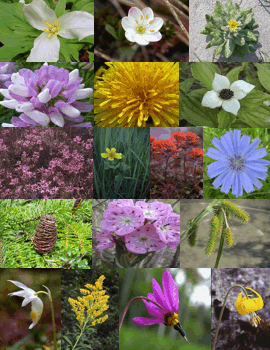Summary:
Features include 1) resupinate growth on conifer wood, 2) a whitish to grayish white, soft, waxy fruitbody that is finely pored to continuous, under a lens bristly from cystidia, the margin thinning out, 3) spores that are allantoid, smooth, inamyloid, and colorless, 4) basidia that are subclavate, thick-walled except for the upper part, and strongly amyloid, 5) cystidia that are amyloid, dissolving in KOH, cylindric, thick-walled with capillary lumen except at the obtuse apex where the wall is thin and mostly incrusted, the base bifurcate (rooting), and 6) a monomitic hyphal system, the hyphae with clamp connections, in the subhymenial layer thick-walled and invariably amyloid.
Tubulicrinis borealis has been found in BC and OR, (Ginns). Its distribution also includes Switzerland (Breitenbach), and northern Scandinavia including Sweden, (Hjortstam).
Fruiting body:
resupinate, effused [spread out], thin or when fully developed often up to 0.007-0.01cm thick; whitish, grayish white, or especially when dried, pale ochraceous; porulose to continuous, with a pilose appearing from the protruding cystidia; margin thinning out; (Hjortstam), resupinate, tightly attached, "forming thin, floccose-pubescent, more rarely open-membranous patches" a few centimeters across, consistency soft, wax-like; white to gray-white; under a hand lens finely pubescent-hispid [downy-bristly]; margin diffuse, (Breitenbach)
Microscopic:
SPORES (5)5.5-6.5(7) x (1.8)2(2.2) microns, allantoid, smooth, thin-walled; BASIDIA 4-spored, "in dense clusters, subclavate", more or less stemmed, after sporulation usually shrunken and with a conic appearance, about 12-18 x 4-4.5 microns, "thick-walled except for the upper part, strongly amyloid", with a basal clamp connection that is difficult to see; CYSTIDIA cylindric, strongly amyloid, generally 60-80 microns long and 5-7 microns wide in the middle part, "narrowing slightly towards the neck, then slightly widened to the obtuse apex, mostly encrusted with crystalline matter at the thin-walled upper part, capillary lumen narrow, gradually expanded or more commonly abruptly widened, occasionally asymmetric"; HYPHAE monomitic, "thin-walled or more often with slight wall thickening, in the subhymenial layer distinctly thick-walled, 2-3 microns wide, and invariably amyloid", all hyphae with clamp connections, (Hjortstam), SPORES 5-6 x 2-2.5 microns, elliptic-cylindric, slightly allantoid, smooth, inamyloid, colorless; BASIDIA 2-4-spored, 8-12 x 4-5 microns, short-clavate, with basal clamp connection; LYOCYSTIDIA 60-90 x 4-7 microns, thick-walled, cylindric "with a slightly widening tip in some and abruptly thin-walled, tip sometimes encrusted", base rooting, cystidia dissolving in KOH, amyloid in Melzer''s reagent; HYPHAE monomitic, 2.5-5 microns wide, thin-walled to thick-walled, septa with clamp connections, (Breitenbach)
|
